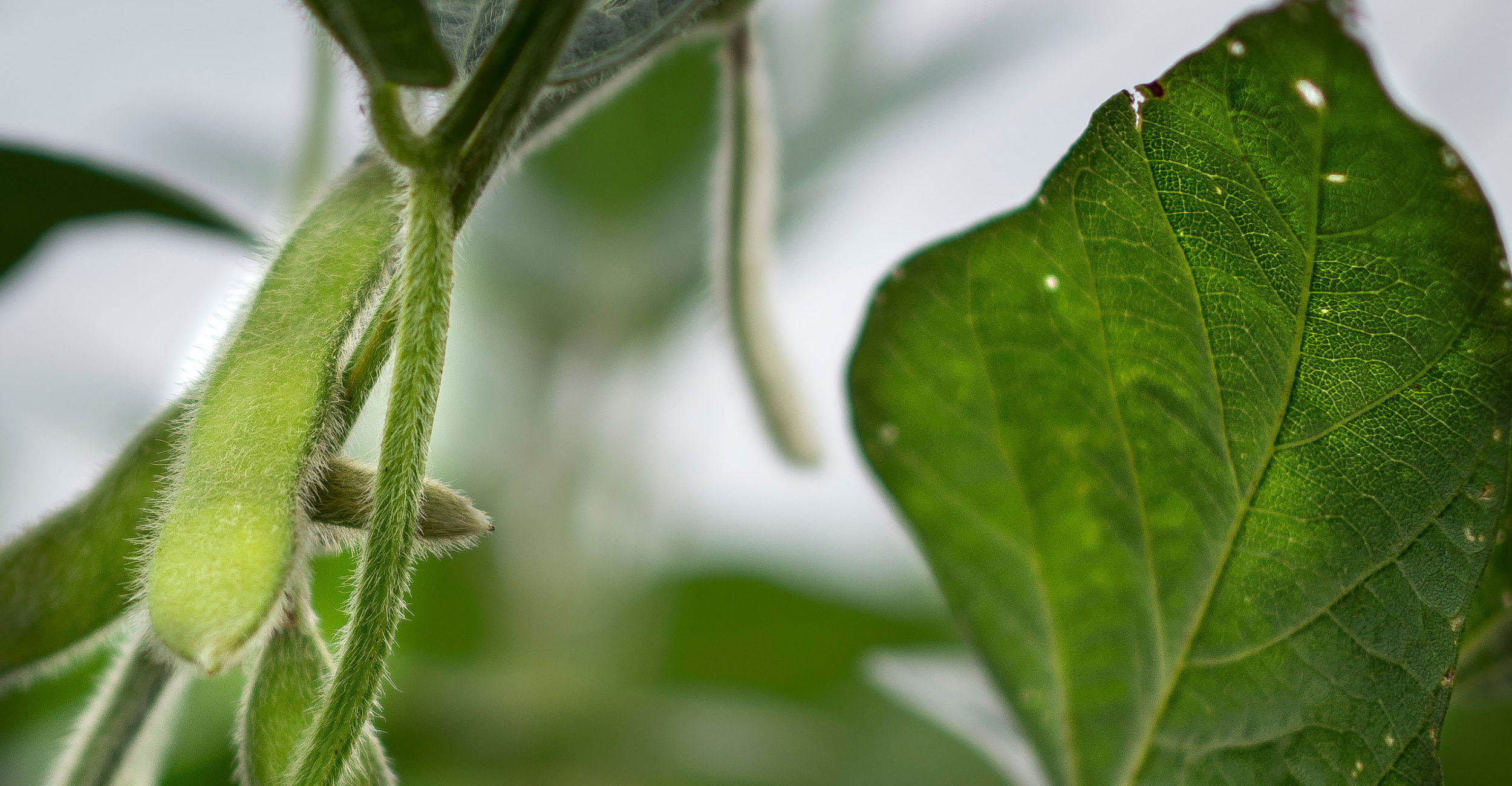
Insect control key to successful double-crop soybean management
Friday, June 11, 2021
Media Contact: Donald Stotts | Agricultural Communications Services | 405-744-4079 | donald.stotts@okstate.edu
Insect control will play a major role in the management of double-crop soybeans after wheat harvest is completed, said an Oklahoma State University Extension expert.
Experienced farmers know soybeans planted after wheat are vulnerable to several insect pests, but most especially defoliating caterpillars and grasshoppers. Three caterpillar defoliators commonly occur in soybeans.
“It’s important to correctly identify the type of caterpillars infesting the crop and estimate defoliation levels before selecting an insecticide to use,” said Tom Royer, OSU Extension Integrated Pest Management coordinator. “At first glance, the three caterpillars look much the same, but they can be easily distinguished with closer inspection. The key is to count their feet.”
- Soybean loopers are light green and develop white stripes as they mature — two on top and two on each side. They have three pair of prolegs — two on the abdomen and one at the back end. They reach maturity at about 1.2 inches. Their name comes from a characteristic looping motion of the larvae.
- Green cloverworm larvae can be confused with soybean loopers at first glance because they also move in a looping motion. A closer look, however, reveals a key difference in the feet. They have four pair of abdominal prolegs — three pair on the abdomen and one pair on the back end. A mature larvae measures about 1.15 inches and is pale green with two longitudinal stripes.
- Velvetbean caterpillars vary from green to brown to black. They develop white stripes as they mature — one on top and two on each side of their body. They have five pair of prolegs — four pairs on the abdomen and one pair on the back end. They are the largest of the three caterpillars, measuring about 1.9 inches at maturity.
“Grasshoppers are equal-opportunity eaters,” Royer said. “Once they run out of food in their hatching areas, they will move into newly planted soybean fields.”
Three methods are typically used to determine the need for grasshopper control: estimating stand loss; counting grasshopper density; and estimating defoliation level.
To estimate stand loss, check 20 row-feet in five locations in the field and determine the percentage of plants cut or missing at each location. Estimate percentage stand loss from the five samples. The treatment threshold for any crop is about 5% to 10% of stand loss, Royer said.
Check grasshopper density by walking in a straight line across the field. Focus your eyes about 10 feet in front of you and visualize a square yard area. Count the number of grasshoppers that jump as you walk slowly forward.
“Walk about 50-75 feet and take another count,” Royer said. “Take counts in at least five different areas of the field and average them out.”
Estimating defoliation can be used for caterpillars or grasshoppers but it can take some practice. To estimate defoliation in soybeans, randomly collect six leaflets — two from the lower part of the crop canopy, two from the middle and 2 from the top — in five locations and estimate percent defoliation by averaging the defoliation level from the 30 leaflets.
Fact sheets detailing research-based recommendations for application rates based on stand loss, pest density and defoliation are available online through OSU Extension and through OSU Extension county offices. Royer recommended producers consult with their OSU Extension county agricultural educator.
The success of double cropping depends highly on initial soil moisture at planting, continued rainfall though the season and severity of heat stress when the crop is at the reproductive growth stage. Farmers using no-till systems may want to review an OSU Extension fact sheet on no-till cropping systems in Oklahoma.
